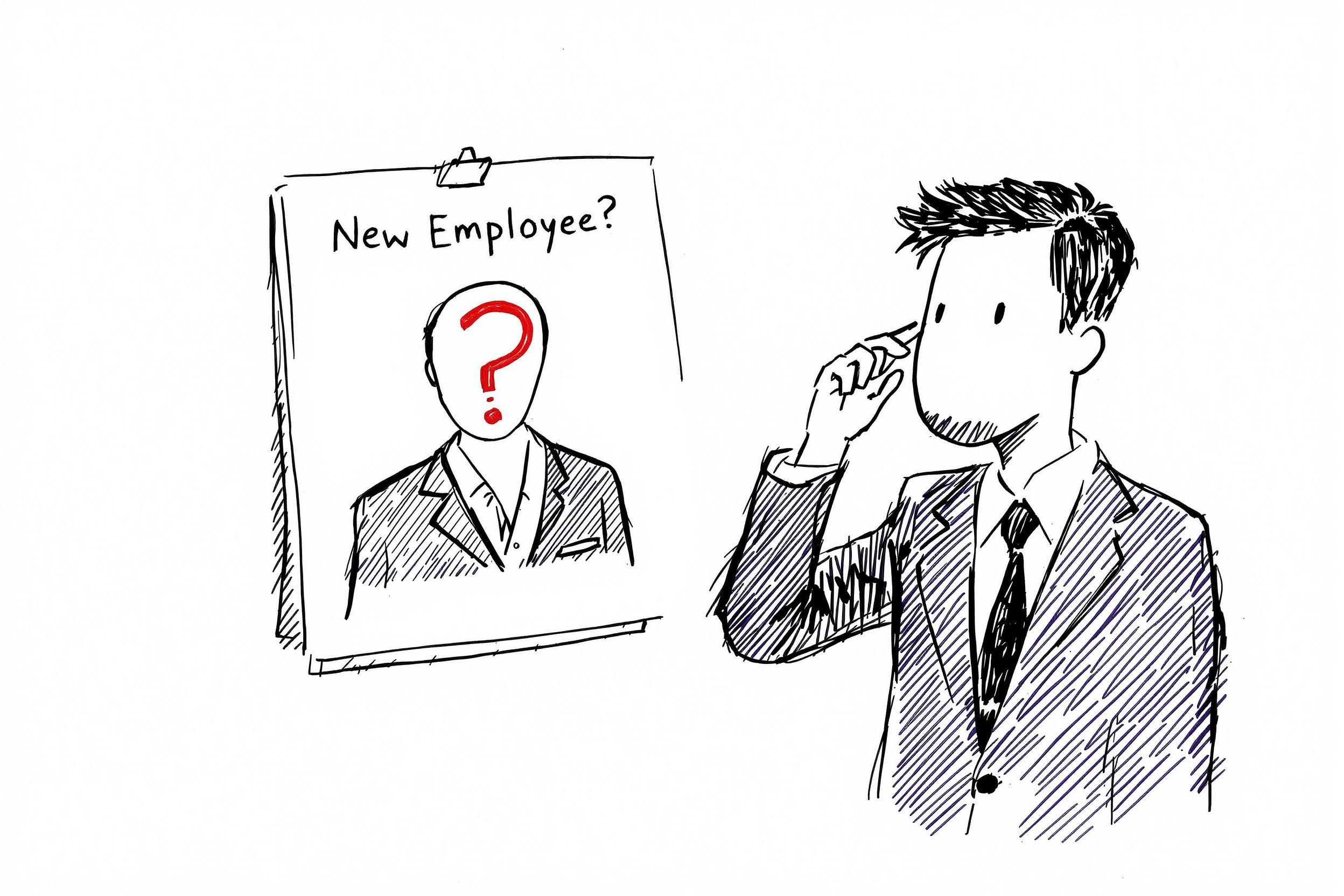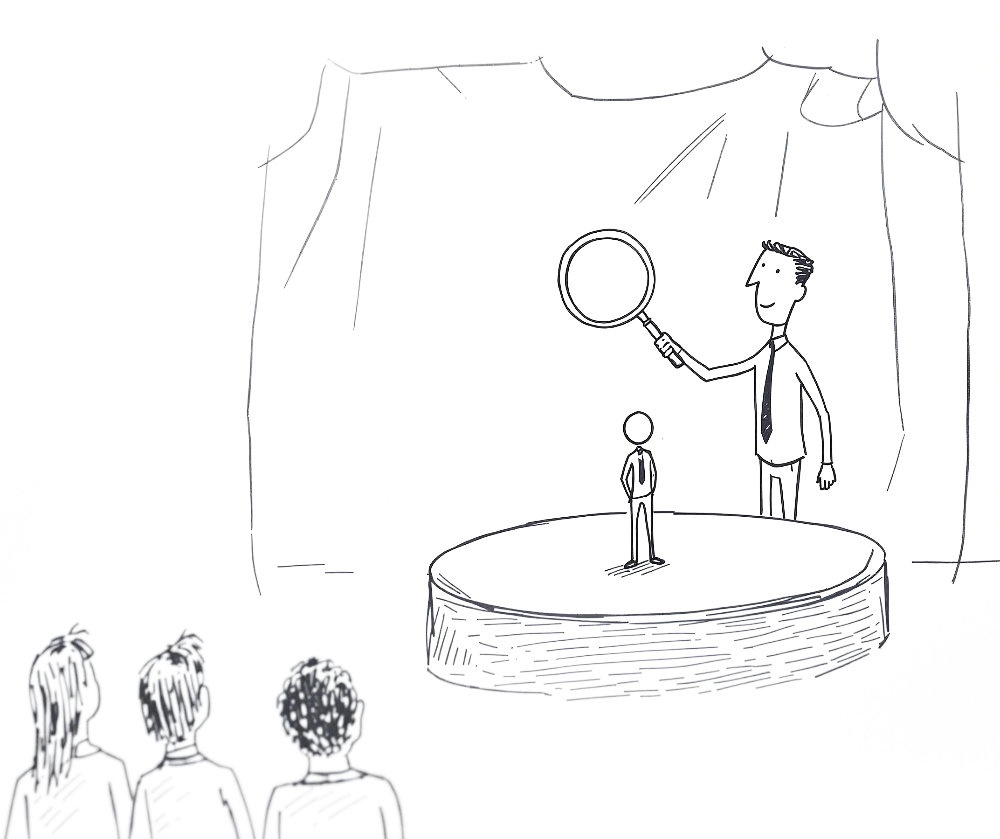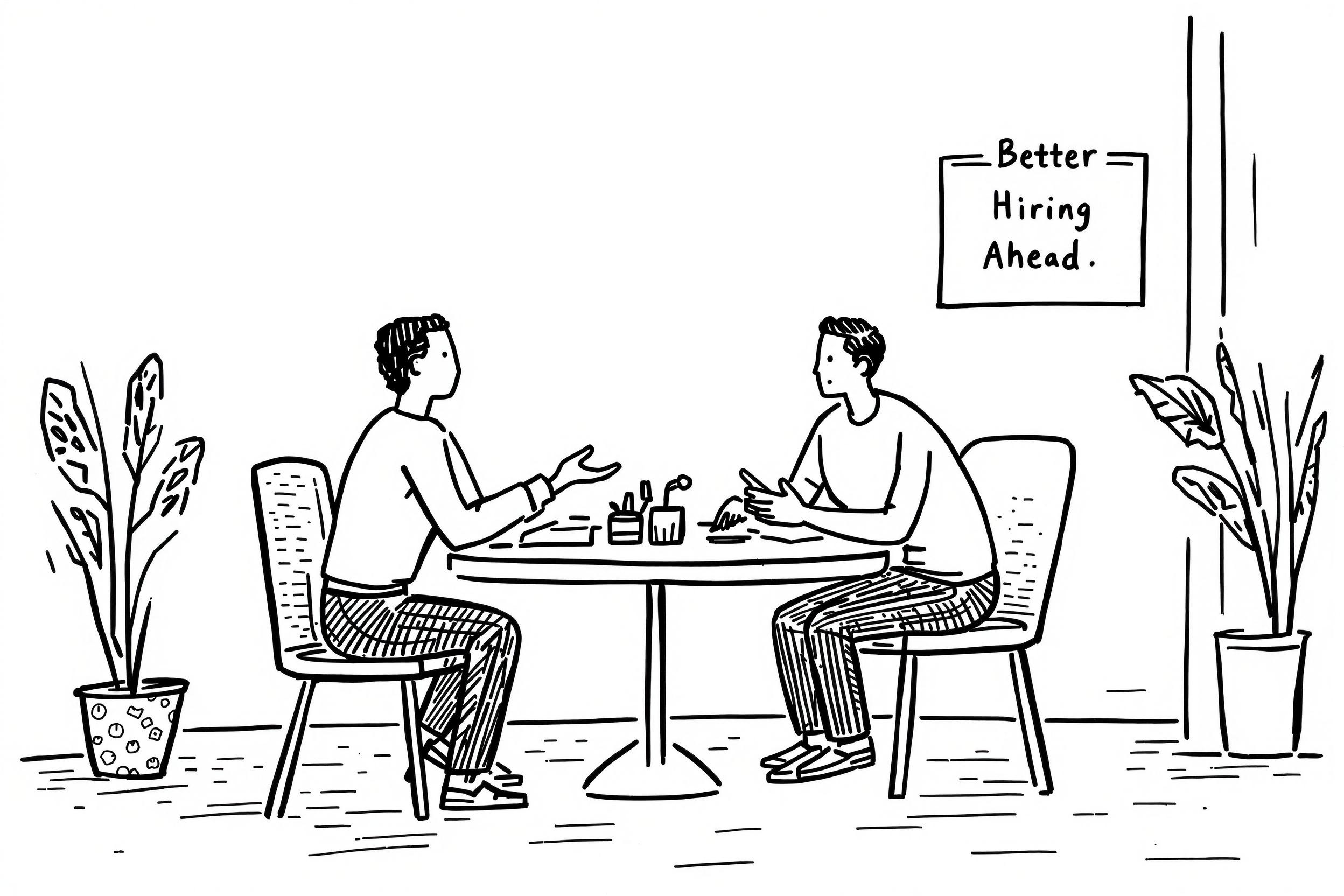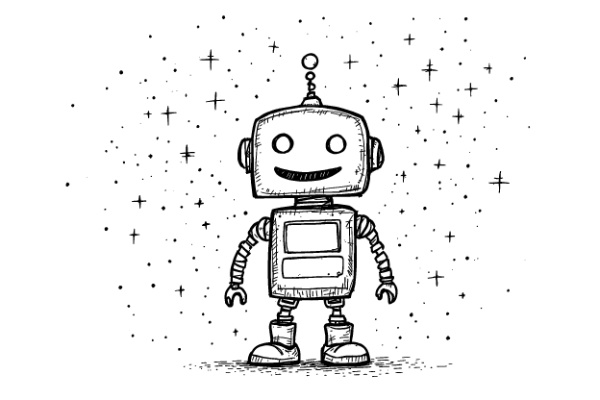We’ve all been there: you hired with high hopes—maybe you even did a happy dance in the office kitchen—only to realize that your shiny new hire isn’t just a poor fit, but a complete cultural catastrophe. They show up late, misunderstand basic instructions, and refer to the company Slack channel as “that chirpy box.” It’s awkward. It’s costly. It’s the professional equivalent of tripping on stage in front of a packed audience.

The big question: What do you do with a bad hire once you’ve realized the situation? Fire them immediately? Offer them a hall pass? Pretend nothing happened and hope for the best?
No. Let’s step back, breathe, and look at this strategically. Because while bad hires feel like unraveling sweaters—pull one thread, and everything falls apart—there are proven ways to handle them that don’t involve nightly sobbing into your stress ball.
Bad hires are not just “mistakes”—they’re opportunities for growth, reflection, and improvement. Let’s dig into how to fix the damage, repair your team dynamic, and even convert a “bad” hire into a future all-star.
The True Costs of a Bad Hire
Before diving into solutions, let’s level-set: bad hires don’t just damage morale—they can hit your wallet harder than a last-minute flight upgrade. Studies suggest that a bad hire can cost up to 30% of their first-year salary. Yikes. And that doesn’t factor in the lost productivity, team friction, and diminished trust among your staff.
Then there’s the ripple effect: top performers might question leadership’s judgement. Customers might sense a drop in service quality. Your brand credibility can take a subtle but real hit. In short: A bad hire is like leaving the office fridge door open—everything gets a little off.
But here’s the good news: The sooner you act, the sooner you can restore balance. Let’s break down some tactics.
1. Consider Onboarding as a Probation Period, Not a Done Deal
One common trap: treating onboarding as a friendly welcome wagon instead of a structured evaluation period. Too often, companies assume that because someone got through the front door, they must be the “right one.” Wrong. Onboarding can be a probation phase where both sides test the waters.
Set clear expectations from Day One. Define milestones and check them regularly. Is the new hire adapting, contributing, and aligning with cultural norms? If not, identify why. Is it a skill mismatch? Lack of clarity? Or are they just a cactus in a rose garden—no matter the watering schedule, they don’t fit?
If it’s clear they’re off-track, don’t wait till the year-end review to address it. Early course correction saves everyone time and pain.
2. Identify Performance Gaps with Surgical Precision
Bad hires aren’t necessarily bad people. They might be talented folks thrust into roles that don’t leverage their strengths. That’s why diagnosing the exact performance gap matters.
Run a skill audit: Are they missing critical competencies? Or do they simply misunderstand their responsibilities? Consider a brief, hands-on work test—something tangible that reflects the real job. Sometimes, the fix is as simple as clearer directions or additional training.
If they’re culturally off—like they keep interrupting the weekly sync with off-topic monologues about their pet iguana—then the problem might be fit, not skill. Culture matters. Even top performers can flop in an environment that doesn’t match their values or style. Identify whether it’s skill or culture, and you’re halfway to the solution.
3. Talk It Out—Communication (Politely) Is Queen
Resist the urge to avoid them in the break room. Instead, talk openly. Sometimes, a “bad hire” just needs clarity—or a gentle nudge. Engage in a frank but respectful conversation.
Try a sandwich approach: acknowledge their efforts, highlight the concern, then reaffirm what success could look like. Don’t say, “You’re hopeless at project management.” Instead: “I’ve noticed you’re struggling with deadlines. Let’s discuss what support you need.”
Humanize the issue. Ask questions: Are they feeling overwhelmed? Misaligned with team goals? Honest dialogue can reveal hidden misunderstandings and spark improvement.
4. Use Performance Improvement Plans (PIPs) Wisely, Not as Scare Tactics
Ah, the PIP. Feared by many, misunderstood by most. A Performance Improvement Plan should be a structured roadmap, not a trap door to swift termination. Set clear, measurable goals and specific timelines. Offer resources—mentoring, training, regular check-ins. Make it collaborative, not adversarial.
A well-structured PIP can transform a lackluster hire into a star. Remember: Some employees just need a push and a bit of structured guidance. If they respond positively, great! If not, you have documentation to justify next steps.
5. Regular Feedback Loops to Spot Problems Early
Don’t wait until you’re smacking your forehead in frustration. Implement regular check-ins and feedback loops. Weekly 1:1s, bi-monthly performance huddles—whatever works. Spotting issues early reduces surprise meltdowns later.
Encourage them to speak up too. Maybe they didn’t realize they should’ve asked about that coding framework. Encouraging two-way feedback creates a more adaptive, forgiving environment. Proactive communication can prevent minor misalignments from evolving into full-blown disasters.

6. Consider the Future Expenses and Team Morale Before Keeping a Bad Hire
Sticking with a bad hire isn’t just about the paycheck—it’s about future cost and team morale. If you keep a misaligned employee for too long, you risk morale crashes and higher turnover among your best talent. Why?
Because your A-players notice. They’ll wonder: “Why are we keeping someone who slows us down?” That frustration can drive them to consider greener pastures. One bad apple really can spoil the barrel—if left unchecked.
So weigh the pros and cons. If improvement efforts fail, it might be kinder to everyone, including the struggling hire, to part ways amicably. Sometimes the best solution is a respectful, well-communicated exit.
7. Upskilling and Development: Don’t Just Throw Them in the Deep End
A “bad hire” could be someone who simply lacks a certain skill. Instead of branding them a lost cause, consider upskilling or reskilling. Offer workshops, online courses, or mentorship programs.
If your employee is floundering due to outdated software skills, teach them. If communication is the issue, send them to a workshop. The investment in development can pay off handsomely. Not only do you salvage a hire, but you signal to your team that you believe in their growth. The message: This company invests in people.
Plus, it’s often cheaper and less risky than firing and rehiring. Look at it as a long-term talent cultivation strategy.
8. Ethical and Humane Exits When Improvement Isn’t Possible
If improvement fails, don’t ghost them or unleash HR hellhounds. Manage the exit ethically. Be honest, compassionate, and professional. Document performance issues thoroughly and ensure compliance with relevant laws and policies.
Emphasize that this decision helps them find a role where they can truly shine. Consider offering a modest severance or career counseling services. Departures handled with dignity protect your employer brand and morale.
Remember: It’s a small world. Today’s ex-employee could be tomorrow’s client or a future partner. How you handle their exit matters.
9. Prevent Future Bad Hires With Better Hiring Practices (Yes, That Means Data and AI)
Solving a current bad hire is great, but prevention is better. Reassess your hiring funnel. Are your job descriptions attracting the wrong crowd? Are you relying too much on “gut feeling”? Use data-driven approaches and incorporate real-world work tests.
Enter AI-driven hiring tools. Platforms like Machine Hiring leverage AI to better match candidates to roles, refine job posts for inclusivity, and predict cultural fits. By analyzing past outcomes, AI can reveal patterns that lead to better hires. No more guesswork—just informed decisions and continuous refinement.
And guess what? There’s a free trial. You can see how AI-driven ATS solutions improve your quality of hire, streamline candidate databases, and reduce the risk of repeating those painful mistakes.
Beyond the Crisis: Turn Bad Hires into Learning Moments
Bad hires, while painful, are learning opportunities. Conduct a retrospective: Where did the process fail? Did you overlook certain red flags? Were job expectations unclear?
Make improvements:
- Refine Your Interviews: Add structured questions and real-world task simulations to see how candidates think under pressure.
- Improve Onboarding: Treat the first months as a diagnostic phase, not a victory lap.
- Boost Communication: Foster a culture of candid feedback, so you catch issues while they’re still peanuts, not watermelons.
This isn’t just theory. Companies that adjust their hiring and onboarding processes see higher retention and better performance. When you treat hiring mistakes as valuable data points, you evolve.
Handling the “Team Impact” of Bad Hires
Bad hires don’t exist in a vacuum. Teams feel the tremors. Address this head-on. If a problematic colleague leaves or drastically improves, acknowledge the turbulence to the team. Show appreciation for their patience and resilience.
Transparency rebuilds trust. When employees see that leadership takes swift, fair action to correct mistakes, morale can rebound stronger than ever.
Imagine saying, “We recognized that John’s role wasn’t working out as planned. We took steps, addressed it directly, and are now adjusting our hiring process.” Employees feel heard and validated.
Leverage Data: Predictive Analytics to Avoid Future Trainwrecks
Predictive analytics and AI-driven assessments are no longer futuristic gimmicks. They’re here, and they can help you preempt bad hires by analyzing candidate data, skills tests, and even subtle language cues.
For example, if data shows that successful employees share a certain adaptability trait, incorporate questions or tasks that reveal adaptability in candidates. If you notice a pattern where culturally misaligned hires come from unclear job postings, rewrite them to emphasize values and mission clearly.
This approach transforms hiring from a hunch-based art into a science-backed craft, as we explored in our article on predictive analytics in recruitment. The outcome? Fewer bad hires down the road.
When It’s Just Not Working—Know When to Let Go
Let’s be real: not every Cinderella story ends with a glass slipper. Some hires just won’t fit, no matter how many pep talks or training sessions you offer. Knowing when to cut ties is crucial.
If PIPs fail, skill gaps persist, and the team is exasperated, a swift and respectful exit is the merciful choice. Dragging it out drains time, money, and energy. Just be sure to follow a fair process—document performance, comply with HR protocols, and communicate clearly. After all, this is a business, not a soap opera.

Culture: The Ultimate Arbiter of Fit
You can have the most skilled candidate on paper, but if they treat collaborative brainstorming sessions like solitary ping-pong matches, it’s trouble. Culture fit (or culture add) matters deeply. When someone disrupts the team’s vibe, it can spread tension like wildfire.
Set your cultural expectations early. If transparency and humility are core values, make them explicit in job postings and interviews. Assess candidates not just on their resume, but also on how they interact, communicate, and handle feedback. This proactive approach prevents hiring someone who thrives in competitive chaos when you’re a bastion of supportive calm.
Could a “Bad Hire” Just Need a Different Role?
Sometimes you didn’t hire a bad employee—you hired a good employee for the wrong job. Before hitting the eject button, consider reassigning them to a role that aligns with their strengths. Maybe your analytical genius isn’t thriving in sales because they hate small talk, but they might excel in data analytics. Reassignments and internal mobility can salvage valuable talent. It shows employees you don’t give up at the first sign of trouble. Just ensure you’re not forcing a round peg into a square hole—be honest about the fit.
Involve the Team in Solutions
Your team sees the daily impact of hires more closely than top management. Get their input. Perhaps they’ve spotted a pattern: this person flounders without structure, or they excel at creative tasks but struggle with deadlines.
Creating a short anonymous survey or a feedback session might offer fresh insights. Co-creating solutions with the team not only improves outcomes but also empowers employees to feel invested in the company’s growth.
Plus, it shows that leadership values their perspective. When people see problems addressed collectively, trust and engagement rise.
Legal and Ethical Considerations: Your Shield Against Future Issues
Let’s talk about the elephant in the room: legal protection. Every step you take with a struggling employee needs to be documented, deliberate, and defensible. Think of it as creating a clear story that anyone could follow—from performance reviews to improvement plans.
Smart companies maintain meticulous records of:
- Every performance discussion (even informal ones)
- Training and support provided
- Written warnings and improvement plans
- Employee responses and feedback
- Accommodations or adjustments made
Your HR team and legal counsel aren’t just bureaucratic roadblocks—they’re your strategic partners in navigating these waters. They ensure your actions are not just legally sound but also align with industry best practices and employment regulations.
But here’s the human side: transparency isn’t just legal protection—it’s respect in action. When employees understand exactly where they stand and what’s expected, they can make informed decisions about their future. That clarity, even in difficult situations, builds trust and professionalism.
Celebrate Turnarounds
Bad hires can become great hires if managed well. If someone improves drastically after training, feedback, or a role shift, celebrate it! Publicly acknowledge their growth. This turns a cautionary tale into a success story, encouraging others to accept coaching, adapt, and grow.
It reinforces a learning culture where mistakes are stepping stones, not sinkholes. When you highlight these positive transformations, you also model resilience and flexibility for the entire team.
Partner With Innovative Tools for Long-Term Hiring Success
Imagine having an ATS that identifies subtle red flags early on, or one that guides you toward candidates who align with both the job requirements and your culture. Tools like Machine Hiring do precisely that. They turn your candidate database into a goldmine of insights, predicting successful hires and offering continuous improvements.
By integrating advanced AI-driven solutions, you reduce future “bad hire” risks. Data-backed recommendations, improved job descriptions, and predictive matching create a virtuous cycle. Over time, your hiring machine gets smarter and your team happier.
Bad Hires Are Not the End—They’re a Fork in the Road
A bad hire isn’t the apocalypse. It’s a situation that demands action, honesty, strategy, and sometimes compassion. Whether you pivot them into a better role, invest in their development, or gracefully show them the exit, each decision shapes your company’s future.
When you respond thoughtfully, you strengthen your hiring practices, sharpen your management skills, and set the stage for a more resilient workforce. Bad hires? They’re just one more stepping stone on the path to a stronger, smarter organization.
Turn these painful lessons into a catalyst for better hiring. And next time, with the right tools and a proactive approach, you might just avoid the headache altogether.
Ready to dramatically reduce the risk of bad hires, streamline your process, and elevate your team quality? Request a demo of Machine Hiring’s platform and take advantage of a free trial. Discover how data-driven insights and AI-backed strategies can transform your recruitment process.


